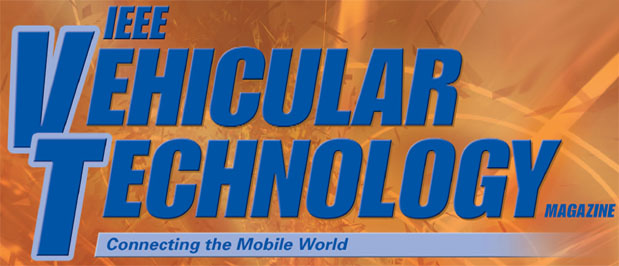Call For Papers: 6G: What is Next?
Important Dates |
|
|---|---|
| Submission Deadline: | EXTENDED to 7 January 2019 (firm) |
| First Revisions/Rejections: | End February 2019 |
| Submission for second round reviews: | 1 April 2019 |
| Acceptance Notification: | 1 May 2019 |
| Final Manuscripts Due: | 10 May 2019 |
| Publication: Fall 2019 | |
We are undoubtedly witnessing the transition into the 4th industrial revolution. Societies are becoming ever more data-centric and data-dependent. The increasing data-dependence of future economies poses a severe challenge on mitigating the digital divide to avoid an unequal distribution of wealth. Radical automation of industrial manufacturing processes will drive productivity. Autonomous systems are hitting our roads, oceans and air space. Millions of sensors will be embedded into cities, homes and food production environments, and new systems operated by artificial intelligence which often will reside in new local ‘clouds’ and ‘fog’ environments will create a plethora of new applications.
Communications networks resemble the nervous system of these new smart system paradigms. 5G made a significant step towards developing a low latency tactile access network, and by providing new additional wireless nerve tracts, i.e., data pipes. With the increase of large autonomy of systems, the protection of ‘nervous system’ against malicious attacks becomes increasing important. Moreover, the system autonomy and the large number of distributed sensor systems demand the simultaneous integration of new energy harvesting concepts. The move from personalized communication to machine-type communication demands radically new communication network architectures.
The objective of this special issue is to define the framework of the 6th generation of communication networks, its services and break-through technologies. We are soliciting original contributions that have not been published and are not currently under consideration by any other journals. Particular emphasis is placed on radically new concepts and ideas which are not just an evolution of 5G technologies. The topics of interest include, but not limited to:
- Key drivers and 6G requirements
- New wireless backhaul and fronthaul solutions
- New security concepts
- Integration of Artificial Intelligence and Machine Learning into new wireless systems solutions and applications
- Innovative applications
- New network architectures
- Concepts and technologies to harness new spectrum
- New energy harvesting technologies, and integration into mobile network architectures
- Techniques to improve energy efficiency
- New approaches to simultaneously increase peak data rates and data density not only in urban environments
- New system architectures stemming from the combination of computing, communication and storage
- Breakthrough technologies and concepts
Submissions should clearly identify how they relate to topics under consideration in this special issue. Contributions describing an overall working system and reporting real world deployment experiences are particularly of interest. Submitted papers should contain state-of-the-art research material presented in a tutorial or survey style. All manuscripts should adhere to the IEEE VTM guidelines at
http://www.ieeevtc.org/vtmagazine/submission.php
Authors should submit a PDF version of their complete manuscripts to
http://mc.manuscriptcentral.com/vtm-ieee
Guest Editors
Harald Haas (h.haas@ed.ac.uk)
The University of Edinburgh, U.K.
Xiaohu You (xhyu@seu.edu.cn)
Southeast University, China
Jaafar Elmirghani (J.M.H.Elmirghani@leeds.ac.uk)
University of Leeds, U.K.
Klaus David (david@uni-kassel.de)
Kassel University, Germany

